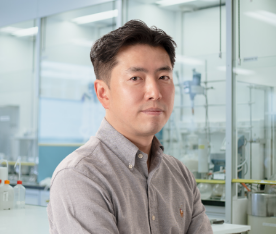

Energy technology

Energy technology
Due to social problems such as depletion of remaining fossil fuel reserviors, global warming, and environmental issues, exploring sustainable energy is an extremely urgent need in the modern society. Especially, energy technologies and applications containing battery, fuel cells, water electrolysis, power to gas(P2G) conversion, and photovoltaic cells are needed to efficiently produce, store and use the clean energy. Now, we are performing the research on materials related to the energy devices and systems.
Due to social problems such as depletion of remaining fossil fuel reserviors, global warming, and environmental issues, exploring sustainable energy is an extremely urgent need in the modern society. Especially, energy technologies and applications containing battery, fuel cells, water electrolysis, power to gas(P2G) conversion, and photovoltaic cells are needed to efficiently produce, store and use the clean energy. Now, we are performing the research on materials related to the energy devices and systems.
Materials for energy storage and conversion
With the spread of electric vehicles and the expansion and use of renewable energy to realize a sustainable energy paradigm, the range of use of lithium ion secondary batteries continues to expand. Accordingly, the demand for high energy/high safety secondary batteries is growingly increasing. The secondary battery is composed of three elements: an anode, a cathode, and an electrolyte. Since it has a simple structure compared to other energy conversion devices, the performance is determined linearly by the functions of the material. Therefore, the development of a new material means the development of a secondary battery having a new function and performance, and a lot of research on the material has been conducted. In particular, many researches on materials capable of further storing energy through a new energy storage method rather than the existing energy storage method have been actively conducted. Through this study, there is an advantage in that it is possible to realize an energy capacity that cannot be obtained by using a platform of an existing secondary battery.


Next generation secondary battery (All solid-state battery)
In order to solve the safety, which is the biggest problem of the existing secondary battery, research is being conducted on an all-solid-state battery using a new type of solid electrolyte rather than a liquid electrolyte currently used. All-solid-state batteries are not only very safe, but also are capable of dramatically increasing energy capacity using high-voltage materials that cannot be used in existing batteries. Furthermore, the all-solid-state battery can be said to be a change of a new energy storage platform, not just a change of a material. Therefore, the all-solid-state battery has received a lot of attention because it can expand the application field where the existing secondary battery can be used to next-generation fields such as sensors and IOT devices.
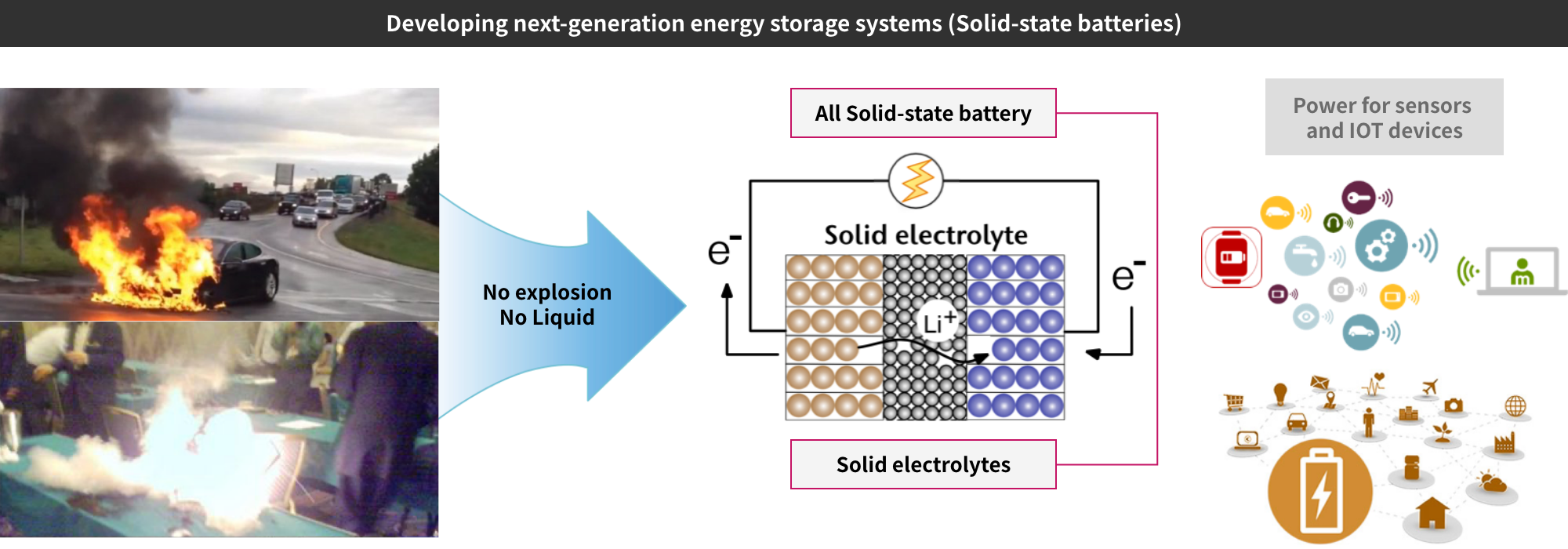
Fuel cell technology :
Non-precious metal and low Pt catalyst research
Fuel cells can be used in a wide range of applications, including transportation, material handling, stationary, portable, and emergency backup power applications. Fuel cells can operate at higher efficiencies than combustion engines, and convert the chemical energy of the fuel into electrical energy with an efficiency of up to 60%. Since the hydrogen fuel cell emits only water, it does not generate smog or cause air pollution such as carbon dioxide emission. In addition, it has the feature of being quiet during operation due to the small number of moving parts.
However, the fuel cell suffers from the viewpoint of price competitiveness because platinum is mainly used as an electrode catalyst. It is difficult to reach the commercialization stage because it has not solved the problems of start-up and endurance under operating conditions and fuel shortage conditions. For this reason, there is a need for research on overall industry challenges such as reducing platinum usage, developing non-precious metal catalysts, and solving durability problems.
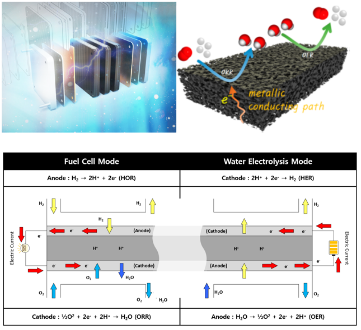
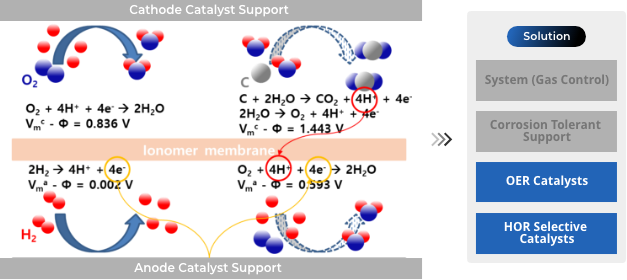
High-performance water electrolysis catalyst
for effective hydrogen production
The optimized method of hydrogen production, an electrolysis method that involves producing hydrogen by electrochemically splitting water has been extensively investigated. Water splitting conversion efficiency is as high as 80% from the viewpoint of the thermodynamics. However, the practical application of water splitting for hydrogen production is limited owing to unfavorable thermodynamics with large overpotential to drive whole process caused by sluggish kinetics involving four electron transfer.
To increase the efficiency and lower the energy consumption of the electrochemical process for hydrogen production, they usually need the assistance of electrocatalysts to overcome the large water splitting overpotential. Practically, an ideal electrocatalysts have not only high activity, but also robust stability for catalyzing water splitting. Our energy research group are therefore interested in the study of catalyst(electrode) properties to improve the activity and stability of water splitting electrocatalyst.
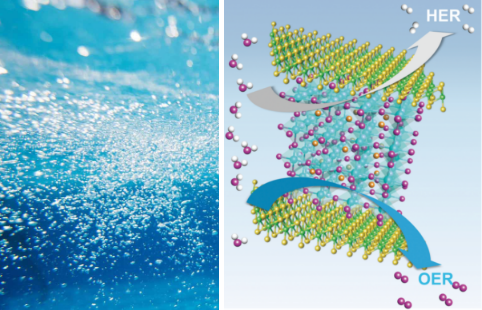

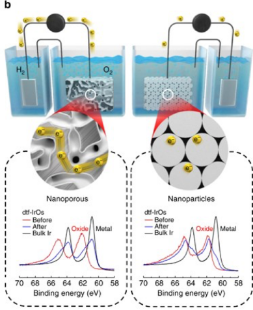
Next generation materials and
devices for solar energy conversion
The sun is the source of most of the energy on earth. Therefore, direct utilization of solar energy is ultimately the most efficient way of electricity generation and its global demand is sharply rising. Recently, emerging thin-film semiconductors are attracting great research interest as the next-generation photovoltaic material overcoming the limitations of classical silicon-based technologies. For example, metal halide perovskites have recently shown rapid growth in their photovoltaic efficiency, catching up with the efficiencies of silicon in only ten years. Moreover, by tuning the optical properties of those emerging materials, we can also optimize multi-junction photovoltaic systems and overcome the thermodynamic limits of single-junction solar cell efficiencies.







